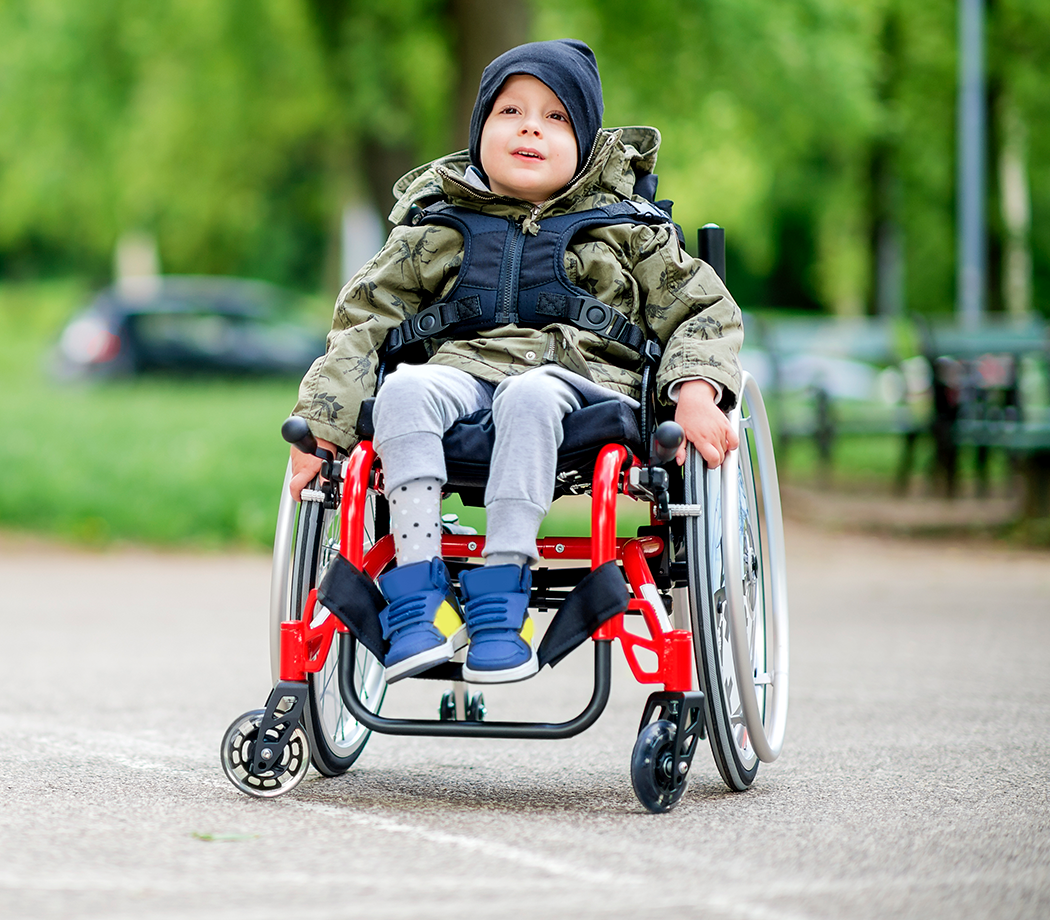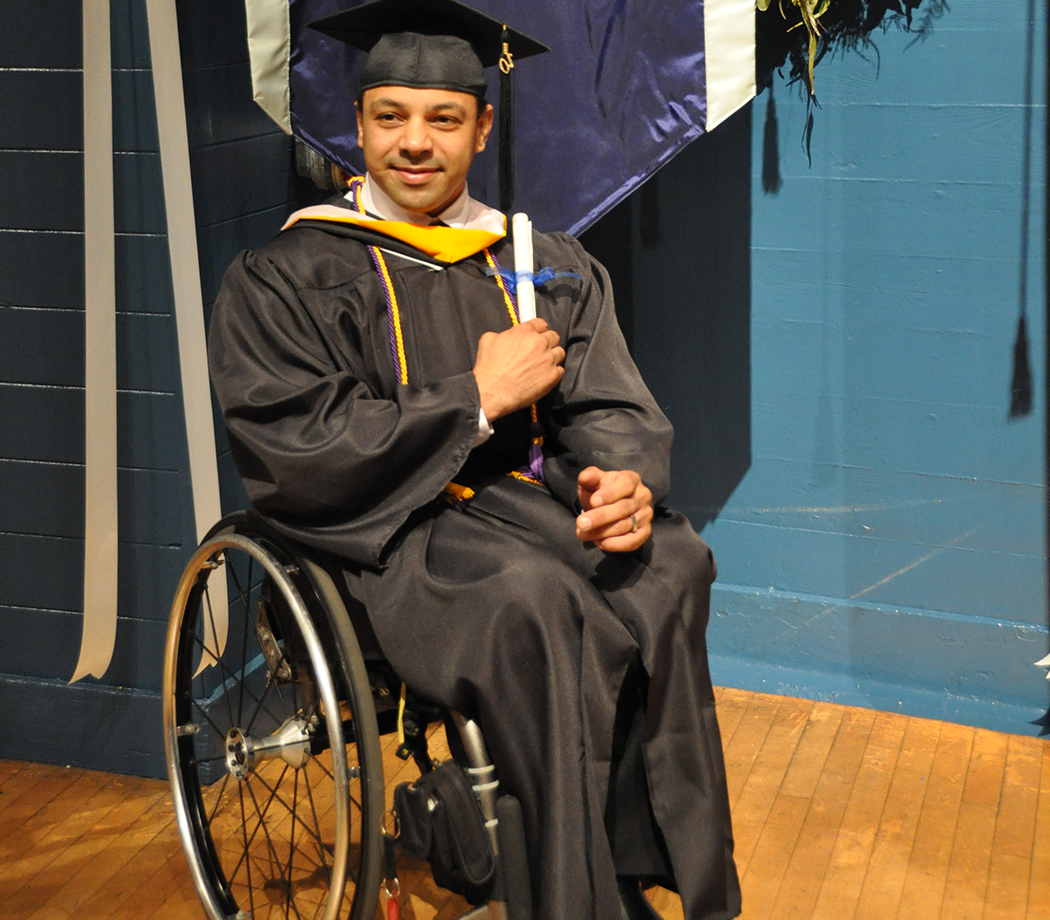Education for Children Living with Paralysis
Getting Your Child Ready for School
Whether your child is a toddler or graduating soon from high school, it is important to be aware of available educational programs and services.
There are a variety of educational programs to assist children with disabilities. Most of these fall under the Individuals with Disabilities Education Act (IDEA), the federal law that addresses the needs of children with disabilities.
There are time frames that school systems must follow. In order to ensure that your child is ready to return to school and receive services immediately, it is important to make the referral in the early days of recovery or diagnosis.
Notify your school’s principal of your child’s disability and to convene an Individualized Education Program (IEP) team meeting for evaluation for services.
Some schools may want you to wait until your child has been discharged from the hospital. Ask if the school system will accept the hospital’s assessments and recommendations – if they will, ask that communication begin between the school and hospital. Document all communication and, if necessary, put your requests in writing.
Many families feel pressure to keep their child caught up in school to continue on with classmates the following school year. While a child is in the hospital or in a rehab center, school can come directly to them. A child can be assigned a teacher and class work can be sent from school. Many rehab programs have set hours for classroom instruction.
Understanding IDEA
The Individuals with Disabilities Education Act (IDEA) was created to ensure that all children with disabilities, regardless of the severity of their disability, have available a “free appropriate public education,” including special education and related services.
IDEA makes funds available for states and cities to assist in the education of infants, toddlers, preschoolers, children and youth with disabilities.
As much as possible, all children with disabilities should be educated in the regular education environment. In order to remain eligible for federal funds, states must ensure that children with disabilities receive a complete individual evaluation and assessment of their specific needs.
An Individualized Education Program (IEP) will be drawn up for every child or youth found eligible for special education or early intervention services. An IEP is the contract between the school district and the student that lists the type and amount of services it will provide to the student.
Those receiving special education have the right to receive the related services, which may include the following:
- Transportation
- Speech pathology and audiology
- Psychological services
- Physical and occupational therapy
- Recreation (including therapeutic recreation)
- Rehabilitation counseling
- Medical services for diagnostic or evaluation purposes
Parents have the right to participate in all decisions related to identification, evaluation and placement of their child with a disability. Parents may appeal any decision concerning the education of their child.
Early Intervention: Birth to 3rd Birthday
Services for very young children, from birth through age two, are called Early Intervention or Part C services (named for its designation in IDEA). Early intervention is an effective way to help children with disabilities and those who are experiencing developmental delays catch up or address specific concerns as soon as possible in their lives.
If you believe your infant or toddler can benefit from early intervention services, you can make a referral yourself or have your hospital or doctor refer your young child.
The state is responsible for implementing early intervention programs for infants and toddlers. Call your state agency (see NICHCY for contact information, below) and explain that you want to find out about early intervention services for your child. Ask for the name of the office, a contact person, and the phone number in your area where you can find out more about the program and have your child screened for a disability or delay.
Even though you know that your child has paralysis, he or she will still need to be screened so that necessary services will be identified.
As with all areas of your child’s health and education, keep a log of who you talked with, the date, time and any notes you may have taken.
Services for Preschoolers with Disabilities: Ages 3 Through 5
Services for preschool children (ages 3 through 5) are provided free of charge through the public school system. If your child was receiving Early Intervention services and is still eligible, he or she will transition over to services for preschool, ages 3-5.
Another way for very young children to become identified is through the local Child Find office. Each state must have comprehensive systems to identify, locate, and evaluate children with disabilities residing in the state and who are in need of special education and related services.
Your pediatrician or rehabilitation hospital may suggest that you contact the appropriate agency to have your child screened and/or evaluated to determine if he or she qualifies for services.
You don’t have to wait until someone suggests that your child be screened, though. If you are concerned about your child’s development, contact the local Child Find office (through your local school system) and arrange to have your child screened. These screenings are free of charge.
IDEA: Kindergarten Through Age 22
Before your child can receive any special education and related services (occupational therapy, physical therapy, nursing, assistive technology) he or she must be referred and evaluated.
The school system has 60 days to complete the assessments – the quicker you make a referral, the faster your child can return to school. If your child qualifies for services, an Individualized Education Program will be drafted and the specific services, goals, objectives and accommodations will be outlined.
For many students with disabilities, the key to success in the classroom lies in having appropriate adaptations, accommodations, and modifications made to the instruction and other classroom activities. This is particularly true for students with paralysis.
Examples of related services are: physical and occupational therapy, school health services, and rehabilitation counseling. Supplementary aids and services might include an aide, a note taker, or other assistive technology.
Transition to Adulthood
If your child is 16 or older, the IEP will include transition services intended to help them move from the world of school to adulthood. As part of transition planning, the IEP team will consider post-secondary education, vocational training or employment. Often, a school’s IEP team is joined by a vocational rehabilitation counselor from the state.
By planning the transition process, your teen will be prepared to move onto the next phase of their life with supports in place.
Section 504 of the Rehabilitation Act of 1973 and Title II of the Americans with Disabilities Act of 1990 prohibit discrimination on the basis of disability.
Practically every school district and postsecondary school in the United States is subject to one or both of these laws.
Section 504 and Title II protect elementary, secondary, and postsecondary students from discrimination. Some of the requirements that apply through high school are different from those that apply beyond high school. Section 504 requires a school district to provide a free, appropriate public education to each child with a disability in the district’s jurisdiction.
Unlike high school, however, a postsecondary school is not required to provide free services. Rather, a postsecondary school is required to provide appropriate academic adjustments as necessary to ensure that it does not discriminate on the basis of disability.
For example, if a postsecondary school provides housing to nondisabled students, it must provide comparable, convenient, and accessible housing to students with disabilities at the same cost.
If you want a postsecondary school to provide an academic adjustment, you must identify yourself as having a disability. Academic adjustments may include auxiliary aids and services, as well as modifications to academic requirements as necessary to ensure equal educational opportunity.
Examples of adjustments include:
- Arranging for priority registration
- Reducing a course load
- Substituting one course for another
- Providing note takers
- Recording devices
- Sign language interpreters
- Extended time for testing
- Equipping school computers with screen reading, voice recognition, or other adaptive software or hardware
A postsecondary school does not have to provide personal attendants, individually prescribed devices, readers for personal use or study, or other devices or services of a personal nature, such as tutoring and typing.
Practically every postsecondary school must have a person – frequently called the Section 504 Coordinator, ADA Coordinator, or Disability Services Coordinator – who coordinates the school’s compliance with Section 504,Title II, or both laws. You may contact that person for information about how to address any concerns about discrimination.
To learn more about the complaint process, call toll-free 1-800-421-3481 or visit the U.S. Department of Education website.
Resources
If you are looking for more information on Social Security or have a specific question, our Information Specialists are available business weekdays, Monday through Friday, toll-free at 800-539-7309 from 9am to 8pm ET.
We also encourage you to reach out to other support groups and organizations specializing in students with disabilities:
- Accessible College The Reeve Foundation is offering three free hours with a consultant from Accessible College who will help you navigate the transition to college with paralysis. Please call a Reeve Foundation Information Specialist at 800-539-7309 for more information on this offer.
- Financial aid: resources for students with disabilities
- HEATH is a national clearinghouse on postsecondary education for people with disabilities, offering fact sheets, website directories, newsletters, and resource materials.
- Navigating and Transitioning to College with Paralysis is a free booklet from the Reeve Foundation.
- Wheels on Campus: A Guide to Wheelchair-Friendly Higher Education is a free booklet from New Mobility and United Spinal Association.



